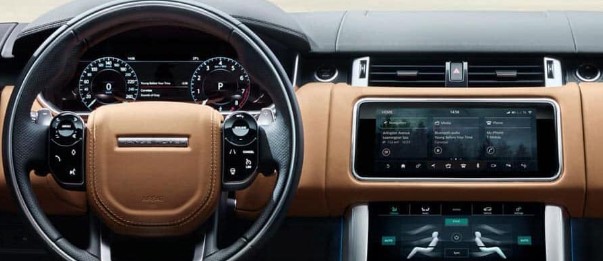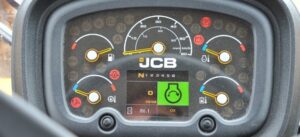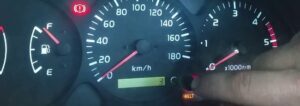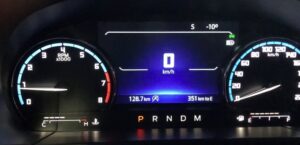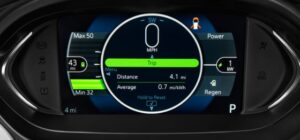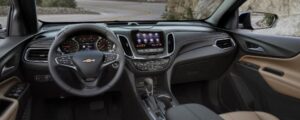Your car is trying to tell you something, but do you know what it’s saying? If you don’t know how to interpret Range Rover warning lights, then you could be in for a world of trouble. Most people are aware that certain symbols on their dashboards represent low fuel or a seatbelt issue, but there are many more that aren’t quite so self-explanatory. In this blog post, we will decode some of the most common Range Rover warning lights so that you can be prepared for anything that comes your way.
See also: Chevy Malibu Years To Avoid
Is Range Rover a Reliable Car?

If you’re considering purchasing a Range Rover, you may be wondering about their reliability. Unfortunately, there is no simple answer to this question. While some owners report having few issues with their vehicles, others have experienced frequent problems.
One factor that may affect a Range Rover’s reliability is how well it is maintained. These cars require regular servicing and care in order to keep them running properly. If they are not properly maintained, they are more likely to experience issues.
Another factor that can impact a Range Rover’s reliability is the age of the vehicle. Older models are more likely to have problems than newer ones. This is due to the fact that they have been on the road for longer and have had more time to develop issues.
If you’re interested in purchasing a Range Rover, it’s important to do your research and make sure you’re aware of the potential risks involved. Make sure you consult with a qualified mechanic before making your decision so that you can get an accurate assessment of the vehicle’s condition.
Range Rover Warning Lights and Color Descriptions
One of the most important things to know about your Range Rover are the warning lights. Each color has a different meaning and it is important to be aware of what they all mean.
The following is a list of colors and their corresponding meanings:
Red – This indicates a emergency. It means that you need to stop and check the car immediately.
Amber – This is a warning light that indicates a problem with the engine, brakes, or transmission. It is important to get this checked out as soon as possible.
Yellow – A yellow light means that something needs attention but is not necessarily an emergency. For example, this may be a low fuel light or a change oil soon light.
Green – Green typically means that everything is working properly and there are no issues to be aware of.
Blue – Blue typically signifies information such as turn signals or high beams being on.
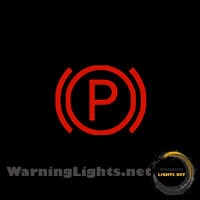 |
Range Rover Electric Parking Brake Warning LightIn this article, we’ll be discussing the Range Rover electric parking brake warning light. This warning light is an important one to be aware of, as it indicates that there is an issue with the electric parking brake system. If this light comes on, it means that the system is not functioning properly and needs to be checked by a qualified technician. When you first start your Range Rover, the electric parking brake warning light should come on briefly and then go off. If it stays on or comes on while you’re driving, it means there’s a problem with the system. The most common cause of this warning light coming on is a faulty parking brake switch. Other potential causes include a defective parking brake actuator or a problem with the electrical connection to the system. If you see this warning light come on, it’s important to get your vehicle checked out as soon as possible. A qualified technician will be able to diagnose the problem and make any necessary repairs. |
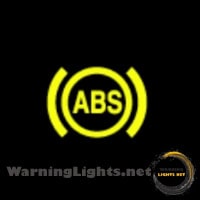 |
Range Rover Abs Warning LightThe Range Rover Abs Warning Light is one of the most important warning lights on your dash. It’s there to tell you when your anti-lock brakes are not functioning properly. If this light comes on, it means that your vehicle’s ABS system has been activated and is working to prevent wheel lockup. If you see this light come on while driving, it’s important to take action immediately. Pull over to a safe location and turn off your engine. Then, check your owner’s manual to see what steps need to be taken next. In most cases, you’ll need to have the ABS system repaired or replaced by a qualified mechanic. Ignoring the Range Rover Abs Warning Light can lead to serious consequences. If you continue driving with a faulty ABS system, you could lose control of your vehicle during a sudden stop or swerve. This could put you and others in danger. So if you see this light come on, make sure to take action right away. |
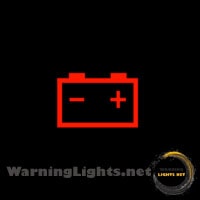 |
Range Rover Battery Charge Warning LightIf the battery charge warning light on your Range Rover comes on, it means that the vehicle’s battery is not being charged. This can be caused by a number of things, including a problem with the alternator or a loose connection. If this light comes on, you should bring your Range Rover to a qualified technician to have it checked out. |
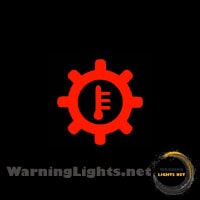 |
Range Rover Transmission Temperature Warning LightIf you see the transmission temperature warning light on your Range Rover, it means that the vehicle’s transmission is overheating. This can be caused by a variety of factors, including low transmission fluid levels, a dirty transmission filter, or excessive towing. If you see this warning light, pull over as soon as possible and turn off the engine. Once the engine is cool, check the transmission fluid level and add fluid if needed. If the fluid level is good, then check the transmission filter and clean or replace it if necessary. If you continue to see the warning light even after taking these steps, then there may be a more serious problem with the transmission and it will need to be diagnosed by a professional. |
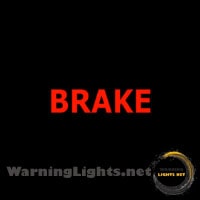 |
Range Rover Brake Warning LightIf your Range Rover has a brake warning light, it means that there is an issue with the braking system. This could be anything from a problem with the brake pads to a leak in the hydraulic system. If you see this light, you should take your vehicle to a mechanic as soon as possible to have it checked out. |
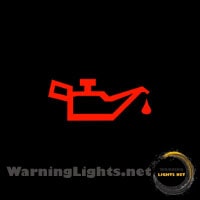 |
Range Rover Engine Oil Pressure Warning LightIf the engine oil pressure warning light illuminates on your Range Rover, it means that the vehicle’s oil pressure is low. This can be caused by a number of things, such as a leak in the oil system, an issue with the oil pump, or a blockage in the oil filter. If you see this light, it’s important to stop the vehicle as soon as possible and check the oil level. Adding more oil may temporarily solve the problem, but it’s best to have a mechanic check it out to be safe. |
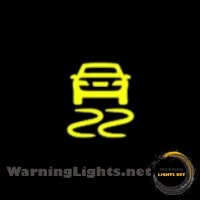 |
Range Rover Electronic Stability Control Active Warning LightIf the electronic stability control (ESC) active warning light is illuminated on your Range Rover, it means that the system has been automatically switched off. This may be due to a fault with the system or because the vehicle is being driven in an off-road condition where ESC is not available. If the ESC active warning light is illuminated, you should take care when driving as the vehicle may be more difficult to control. If you experience any difficulty controlling the vehicle, you should pull over and stop in a safe place as soon as possible. |
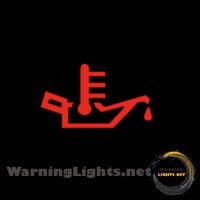 |
Range Rover Oil Temprature Warning LightIf the oil temperature warning light comes on in your Range Rover, it means that the engine oil is too hot. This could be due to a number of factors, such as a dirty oil filter, low oil level, or a problem with the cooling system. If you see this warning light, you should pull over as soon as possible and turn off the engine. Once the engine is cool, check the oil level and add more if needed. If the problem persists, take your Range Rover to a qualified service center for further diagnosis. |
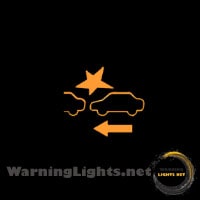 |
Range Rover Forward Collision (FCW) Warning LightIf you see the Range Rover FCW Warning Light, it means that the Forward Collision Warning system has been turned on. This system uses a camera to detect vehicles in front of you and will provide an audible and visual warning if it detects a potential collision. |
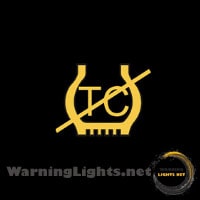 |
Range Rover Traction Off Warning LightWhen the Range Rover’s traction off warning light comes on, it means that the vehicle’s four-wheel drive system has been disengaged. This can happen for a number of reasons, such as when the vehicle is being driven in low-traction conditions (such as on sand or mud) or when the four-wheel drive system is not needed (such as on dry pavement). If the traction off warning light comes on while you are driving, you should pull over and stop the vehicle as soon as possible. Once stopped, you can turn the four-wheel drive system back on by engaging the appropriate switch. If the traction off warning light continues to come on even after you have engaged the four-wheel drive system, there may be a problem with the system and you should have it checked by a qualified technician. |
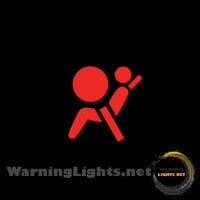 |
Range Rover Air Bag Warning LightThe Range Rover air bag warning light is one of the most important warning lights on your dashboard. It is important to know what this light means and what to do if it comes on. The air bag warning light is located on the center of the dashboard, in between the speedometer and tachometer. This light is usually white or yellow and will illuminate when there is an issue with the air bag system. If this light comes on, it means that there is a problem with the air bags or the seat belts. There could be a number of reasons why this happens, such as a loose connection, a blown fuse, or a problem with the sensors. If this light comes on, you should take your vehicle to a qualified technician as soon as possible to have it checked out. Do not drive your vehicle if this light is illuminated, as it could be very dangerous. |
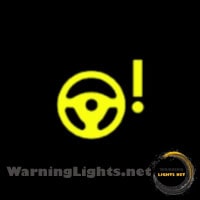 |
Range Rover Power Steering Fault Warning LightIf you see the power steering fault warning light on your Range Rover’s dash, it means there is a problem with the vehicle’s power steering system. This could be due to a failure in the system itself, or low fluid levels. If you see this warning light, you should take your Range Rover to a qualified technician as soon as possible to have the problem diagnosed and repaired. Driving without power steering can be very difficult, and may even damage the vehicle. |
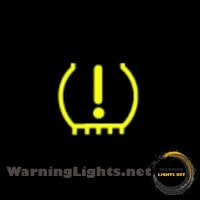 |
Range Rover Tire Pressure Monitoring System(TPMS) Warning LightIf your Range Rover’s tire pressure monitoring system (TPMS) warning light is on, it means that one or more of your tires is significantly under-inflated. You should stop immediately and check your tires to see if they need to be inflated. If you continue to drive with under-inflated tires, it can lead to decreased fuel efficiency, increased wear and tear on the tires, and even a blowout. So it’s important to take care of this issue as soon as the warning light comes on. |
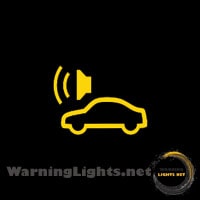 |
Range Rover Sound System Warning LightIf you see the Range Rover sound system warning light, it means there is a problem with the audio system. This could be anything from a blown fuse to a faulty speaker. Check the fuse box first and if that doesn’t fix the problem, take your vehicle to a qualified technician for further diagnosis. |
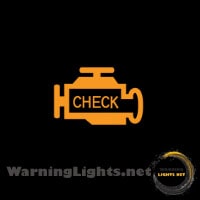 |
Range Rover Engine Check Warning LightIf your Range Rover’s engine check warning light is on, it means that there is an issue with the vehicle’s emission control system. The light may come on due to a faulty sensor or a problem with the catalytic converter. If the light is on, you should take your Range Rover to a qualified mechanic for diagnosis and repair. |
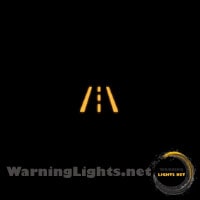 |
Range Rover Lane Departure Warning LightIf you see the Range Rover Lane Departure Warning Light, it means that the vehicle is about to drift out of its lane. This is usually caused by the driver not paying attention to the road ahead. The light will flash and a beep will sound to alert the driver. If the driver does not take action, the vehicle will automatically steer itself back into its lane. |
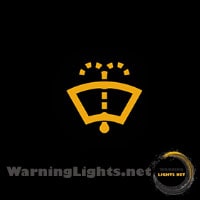 |
Range Rover Low Washer Fluid Warning LightWhen the Low Washer Fluid Warning Light illuminates on your Range Rover, it’s an indication that the windshield washer fluid level is low and needs to be refilled. This warning light is usually triggered when the fluid level drops below a certain point, so it’s important to keep an eye on it and top off the reservoir as needed. If you ignore the warning and continue driving without refilling the washer fluid, you may eventually run out completely. This can be dangerous if you need to use the wipers in bad weather and can’t see through the windshield. So if you see this light, be sure to stop and add more washer fluid as soon as possible. |
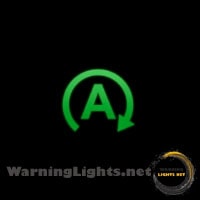 |
Range Rover Automatic Start-Stop Warning LightIf you see the Automatic Start-Stop Warning Light on your Range Rover’s dash, it means there is a problem with the vehicle’s start-stop system. This system automatically turns the engine off when the vehicle is not in use and starts it again when needed. If the warning light is on, it means that the start-stop system is not working properly and needs to be serviced. It is important to get this fixed as soon as possible as it can affect your fuel economy and emissions. |
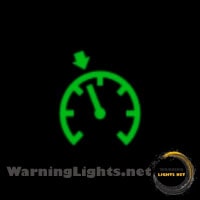 |
Range Rover Speed Control Fault Warning LightWhen the Range Rover Speed Control Fault Warning Light illuminates, it means that there is a problem with the speed control system. This could be a result of a faulty sensor or a wiring issue. If this light comes on, you should take your vehicle to a qualified technician for diagnosis and repair. |
What problems do Range Rover Have?
The Range Rover is a large, luxurious SUV that is popular among celebrities and wealthy individuals. Despite its high price tag, the Range Rover has been known to have a number of problems, including engine issues, transmission problems, and electrical problems. In addition, the Range Rover has been known to be unreliable and difficult to service. As a result, many owners of the Range Rover have had to deal with expensive repairs and lengthy downtime.
We hope that this article has helped you understand the meaning of some of the most common Range Rover warning lights. While many of them are simply informational, others indicate a more serious problem that should be addressed by a qualified technician as soon as possible. If you’re ever unsure about what a particular warning light means, be sure to consult your owner’s manual or contact your local Range Rover dealership for assistance.

